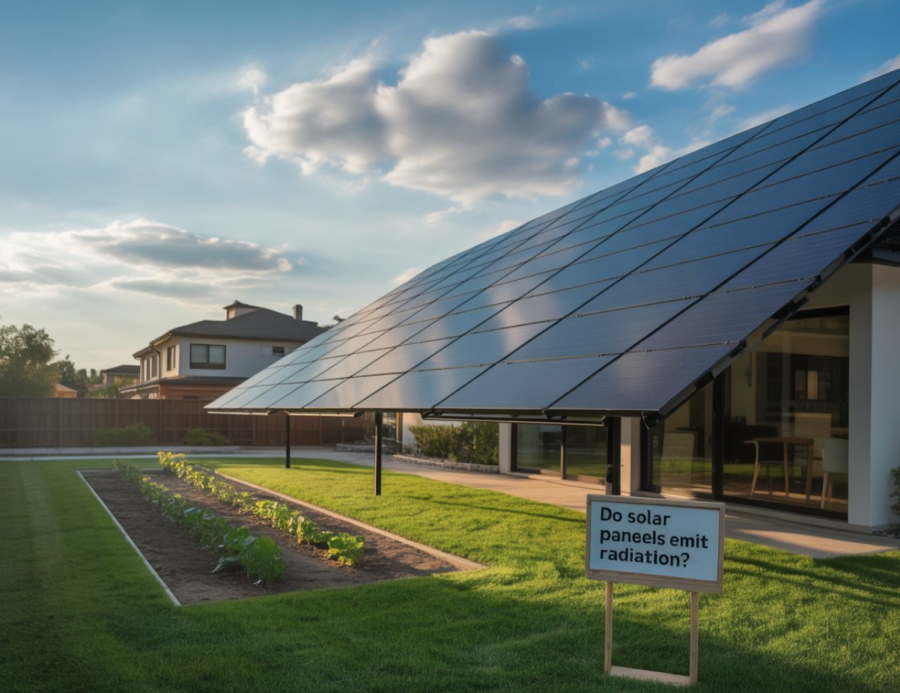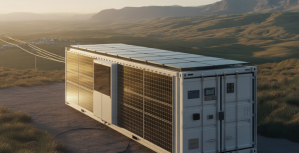Do Solar Panels Emit Radiation?
Solar technology has become a cornerstone of the global transition to clean and renewable energy. Millions of homes and businesses now rely on rooftop and ground-mounted systems to reduce carbon emissions and cut electricity bills. But as adoption grows, so do questions about safety. One of the most common concerns raised by new adopters is whether solar panels emit harmful radiation.
To answer this question, it’s important to distinguish between types of radiation, understand how photovoltaic systems work, and examine the scientific evidence available.
Ionising vs. Non-Ionising
Radiation is often associated with harmful effects, but not all radiation is the same. It can be broadly divided into two categories:
- Ionising Radiation: This includes X-rays, gamma rays, and certain ultraviolet (UV) rays. Ionising radiation carries enough energy to remove tightly bound electrons from atoms, which can damage DNA and potentially cause cancer.
- Non-Ionising Radiation: This includes visible light, infrared, microwaves, and radiofrequency (RF) waves. These forms of radiation do not have enough energy to ionise atoms or molecules and are generally considered safe at low levels.
Solar systems interact with both categories in different ways, but only one of them is directly relevant to human health concerns.
How Solar Panels Work
Solar modules generate electricity through the photovoltaic effect. Here’s how the process unfolds:
- Light Absorption: Silicon-based cells capture sunlight.
- Electron Excitation: Photons from sunlight energise electrons, causing them to move.
- Current Flow: This movement creates a direct current (DC).
- Inverter Conversion: An inverter transforms DC into alternating current (AC), which powers appliances and homes.
Throughout this process, the main “radiation” involved is simply sunlight itself, which includes both visible and ultraviolet light. Once captured by the cells, that energy is converted into electricity. The equipment itself does not emit ionising radiation.
Do Solar Panels Emit Harmful Radiation?
The short answer is no. Solar installations do not emit dangerous ionising radiation. Instead, what they do generate is extremely low levels of electromagnetic fields (EMFs).
- Source of EMFs: Wiring, inverters, and other electrical components create electromagnetic fields as electricity flows.
- Type of EMF: These are non-ionising, similar to what’s produced by household devices such as Wi-Fi routers, cell phones, or kitchen appliances.
- Health Impact: According to the World Health Organisation (WHO), there is no conclusive evidence that low-level EMF exposure from such devices poses health risks.
Comparing Solar Systems With Everyday Devices
To put EMF levels into perspective:
- Mobile Phones: Generate higher localised RF exposure during calls.
- Microwave Ovens: Emit stronger fields while operating.
- Wi-Fi Routers: Continuously emit RF waves in homes and offices.
By contrast, the EMFs from photovoltaic arrays are significantly weaker and often dissipate quickly with distance. Standing a few feet away from an inverter or panel reduces exposure to negligible levels.
What About Ultraviolet (UV) Exposure?
Another concern relates to UV radiation. The sun naturally emits UV rays, which are linked to skin ageing and cancer. However, solar cells are designed to absorb and convert this energy into electricity. Far from increasing UV exposure, panels may actually reduce it by absorbing a portion of the rays that would otherwise strike roofs or the ground.
Scientific Evidence on Solar Radiation Safety
Numerous studies have investigated potential health effects:
- World Health Organisation: No confirmed evidence of health risks from low-level EMFs.
- International Commission on Non-Ionising Radiation Protection (ICNIRP): Exposure limits are far higher than the EMFs produced by residential solar installations.
- Peer-Reviewed Research: Measurements around solar farms consistently show radiation levels well below international safety standards.
Benefits of Solar Energy Compared to Other Power Sources
When evaluating safety, it helps to compare renewable systems with traditional power generation:
- Fossil Fuels: Coal and gas plants release particulate matter, greenhouse gases, and even trace radioactive elements.
- Nuclear Plants: Require careful radiation management due to ionising emissions.
- Solar Installations: Operate silently, without combustion or toxic emissions, and with negligible non-ionising radiation.
This makes solar one of the cleanest and safest forms of electricity generation available today.
Mitigating EMF Concerns
Although risks are minimal, those sensitive to EMFs can take additional precautions:
- Proper Installation: Ensure panels, wiring, and inverters are installed by certified professionals.
- Maintain Distance: Place inverters in garages, basements, or outdoor areas rather than living spaces.
- Shielding Measures: For large-scale projects, EMF shielding materials may be used, though they are rarely necessary for homes.
- Regular Maintenance: Well-maintained systems operate more efficiently and emit lower levels of stray electromagnetic fields.
Broader Environmental and Health Advantages
In addition to being safe from a radiation perspective, solar technology offers wide-ranging benefits:
- Air Quality: Reduces reliance on fossil fuels, lowering smog and respiratory illness.
- Climate Impact: Cuts greenhouse gas emissions, slowing global warming.
- Noise Pollution: Operates silently compared to diesel generators.
- Water Conservation: Uses far less water than coal or nuclear plants.
These advantages highlight how the adoption of photovoltaic systems improves both human health and environmental quality.
Common Myths About Solar Radiation
- “Solar panels leak radiation constantly.”
- False: They only generate non-ionising EMFs when producing electricity, at extremely low levels.
- False: They only generate non-ionising EMFs when producing electricity, at extremely low levels.
- “Living near solar farms is dangerous.”
- False: EMF levels at even the perimeter of solar farms are negligible compared to household electronics.
- False: EMF levels at even the perimeter of solar farms are negligible compared to household electronics.
- “Solar installations increase UV exposure.”
- False: They absorb UV rays instead of emitting them.
- False: They absorb UV rays instead of emitting them.
- “Radiation from solar power accumulates over time.”
- False: EMFs dissipate rapidly with distance and do not accumulate in the body.
The Future of Safe Solar Technology
Advancements in solar materials and design are further improving safety:
- Smart Inverters: Produce lower EMF levels and improve energy efficiency.
- Shielded Wiring: Reduces stray electromagnetic emissions.
- Integrated Building Materials: Panels embedded in rooftops or windows minimise external components, further reducing exposure.
As innovation continues, solar systems will become even safer, more efficient, and more sustainable.
To Conclude
The concern over whether solar technology emits harmful radiation is understandable but largely unfounded. The only “radiation” involved is non-ionising electromagnetic fields, similar to everyday electronics, and ultraviolet rays that are absorbed rather than emitted. Scientific evidence consistently shows that photovoltaic systems are safe for both people and the environment.
By embracing this clean technology, households and businesses not only secure affordable and sustainable electricity but also contribute to reducing harmful emissions from traditional energy sources. With proper installation and maintenance, solar remains one of the safest, most effective solutions for powering the future.
Share It on :





